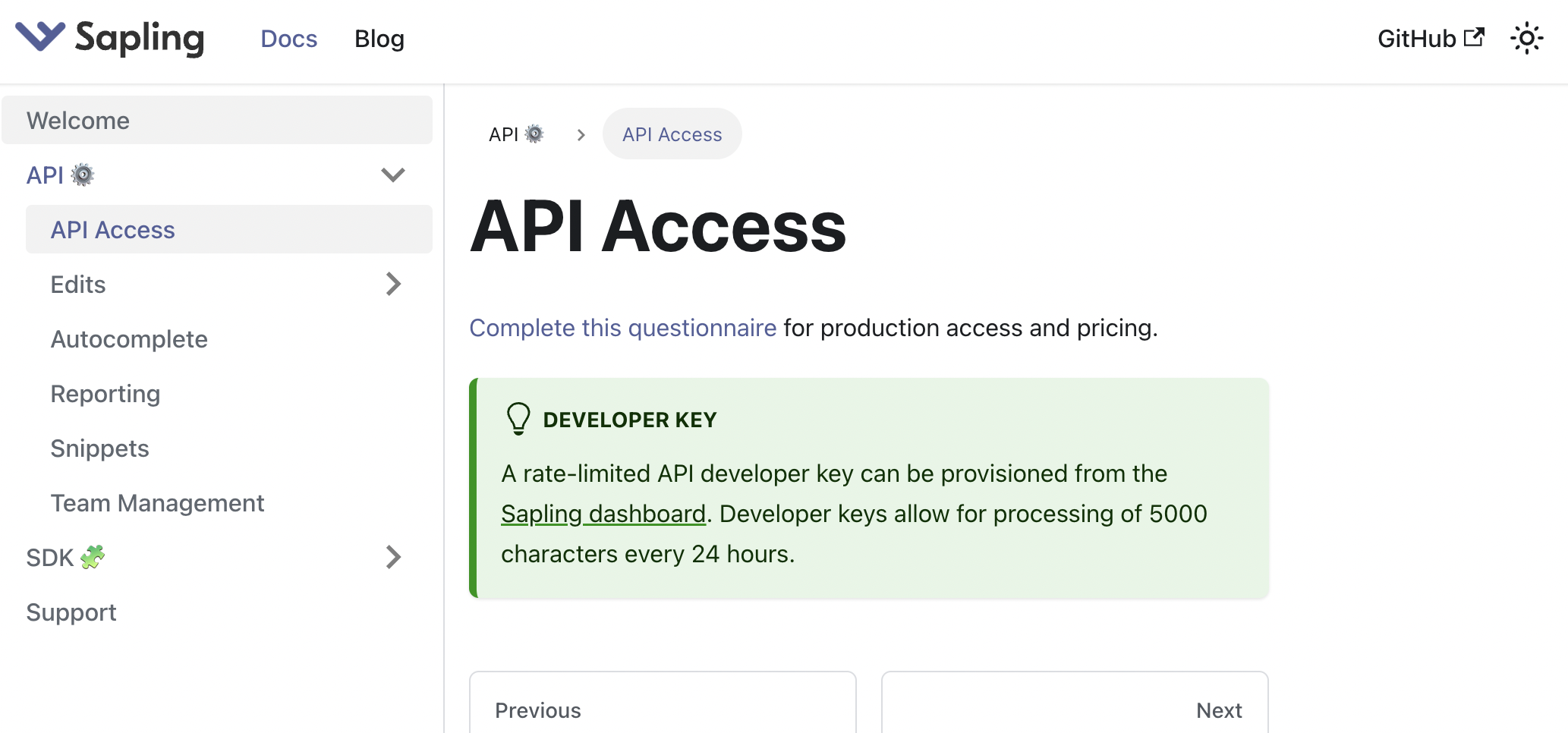AI Content Detection in Scala

Scala is a programming language designed to run on the JVM, supporting both functional and object-oriented programming patterns. It is designed to be more concise than Java.
Sapling: AI Generated Content Detector
How do you distinguish or determine between text written by a human and text written by Large Language Model generative AIs? With Sapling, you can integrate AI Content Detection to an existing Scala application. You can also add grammar, spell checking, and other text AI functionality.
This page demonstrates a quick way to integrate AI writing and AI text checking functionality into a Scala application using Sapling's API. If you are not looking for a Scala guide, click here for guides for other programming languages.
Sapling does not currently maintain a Scala-specific SDK, but you can access the Sapling AI Detection HTTP API using any programming language that supports HTTP POST requests. An example of an AI text detector is shown below.
Setup Steps
- [Register] for an account.
- Visit the [dashboard] to generate an API key.
- Run the code below, filling in your API key.
- Use longer text (more than 150 characters) for more accurate results.
Scala Grammar Check Quickstart
This is an example of doing an HTTP Post request using scalaj-http, which is now deprecated
import scalaj.http.{Http, HttpOptions}
object Main {
def main(args: Array[String]): Unit = {
println("Hello world!")
val data : String = """{"key":"API_KEY","text":"I am an artificial intelligence system designed to help people solve complex problems. My capabilities include natural language processing, machine learning, and predictive analytics."}"""
val url : String = "https://api.sapling.ai/api/v1/aidetect"
val result = Http(url).postData(data)
.header("Content-Type", "application/json")
.header("Charset", "UTF-8")
.option(HttpOptions.readTimeout(30000)).asString
}
}
You can also use the native Java HTTPClient to reduce dependancies
import java.net.http.HttpClient;
import java.net.http.HttpRequest;
import java.net.http.HttpResponse;
object Main {
def main(args: Array[String]): Unit = {
println("Hello world!")
val params : String = """{"key":"API_KEY","text":"I am an artificial intelligence system designed to help people solve complex problems. My capabilities include natural language processing, machine learning, and predictive analytics."}"""
HttpClient client = HttpClient.newHttpClient();
HttpRequest request = HttpRequest.newBuilder()
.uri(URI.create(url))
.header("Content-Type", "application/json")
.POST(HttpRequest.BodyPublishers.ofString(params))
.build();
client.sendAsync(request, HttpResponse.BodyHandlers.ofString())
.thenApply(HttpResponse::body)
.thenAccept(System.out::println)
.join();
}
}
Returned result:
{
"score":0.9989707556330055,
"sentence_scores":[
{
"score":0.9764397893790885,
"sentence": "I am an artificial intelligence system designed to help people solve complex problems."
},
{
"score":0.9923806397189778,
"sentence":"My capabilities include natural language processing, machine learning, and predictive analytics."
}
],
"text":"I am an artificial intelligence system designed to help people solve complex problems. My capabilities include natural language processing, machine learning, and predictive analytics."
}Documentation
Addtional parameters and Sapling's full API documentation can be accessed here: https://sapling.ai/docs/api/detector
